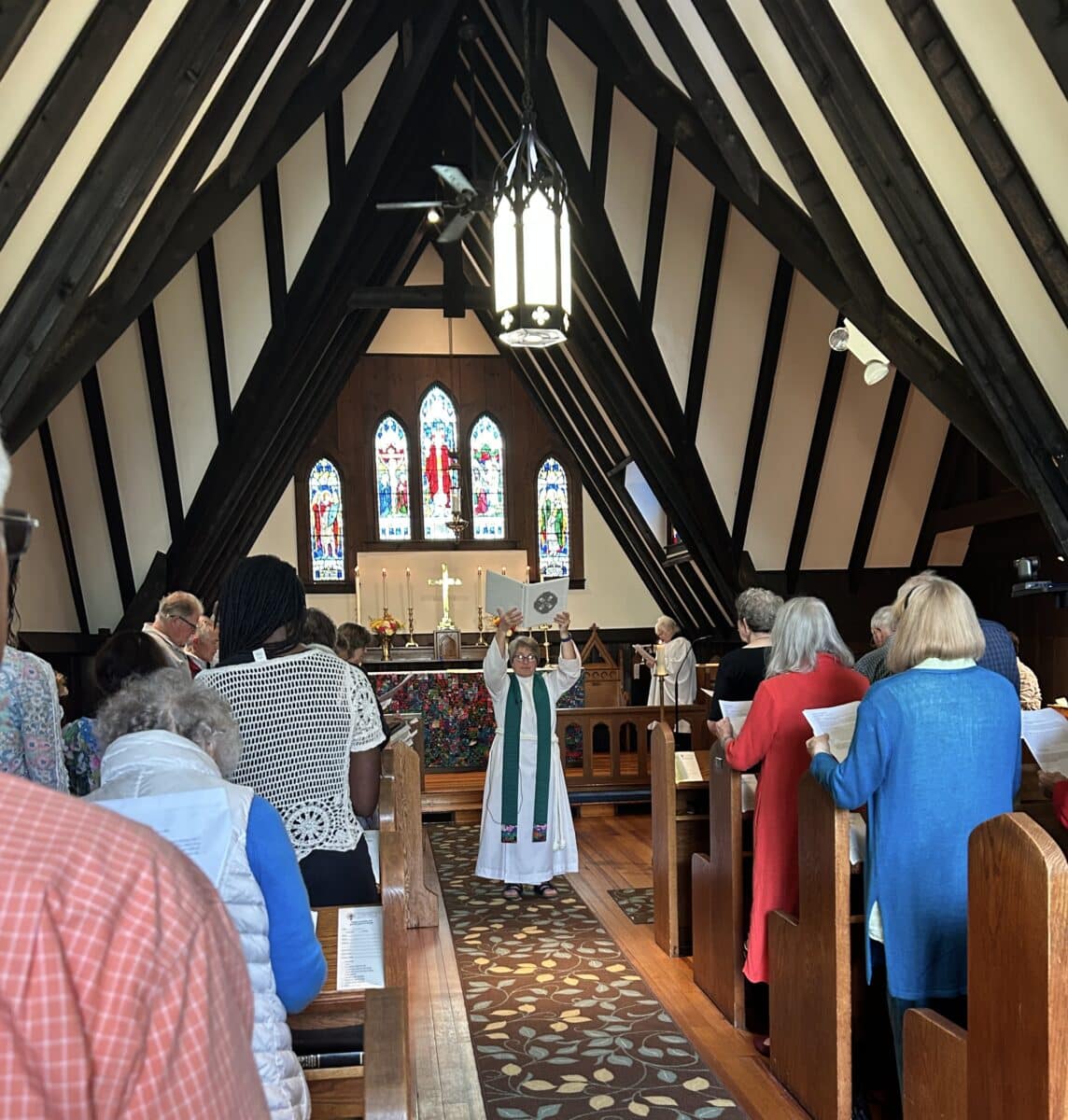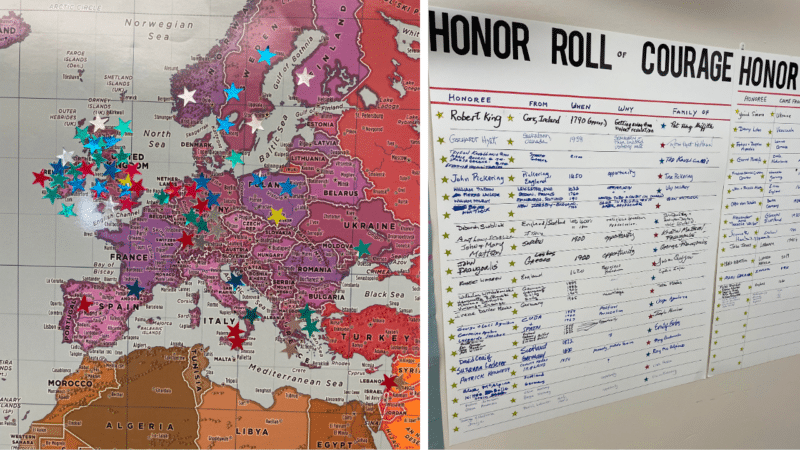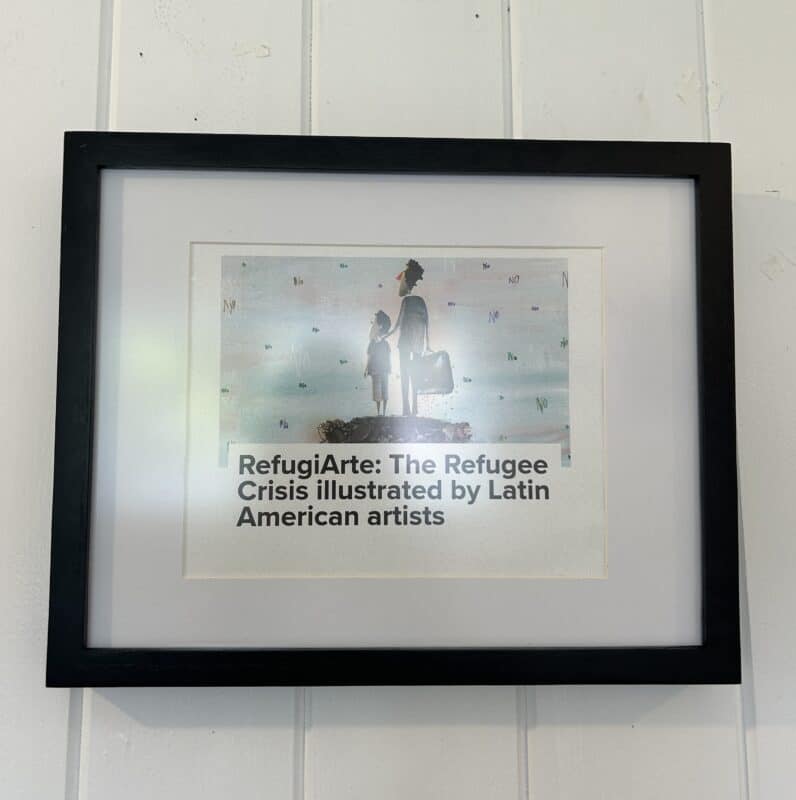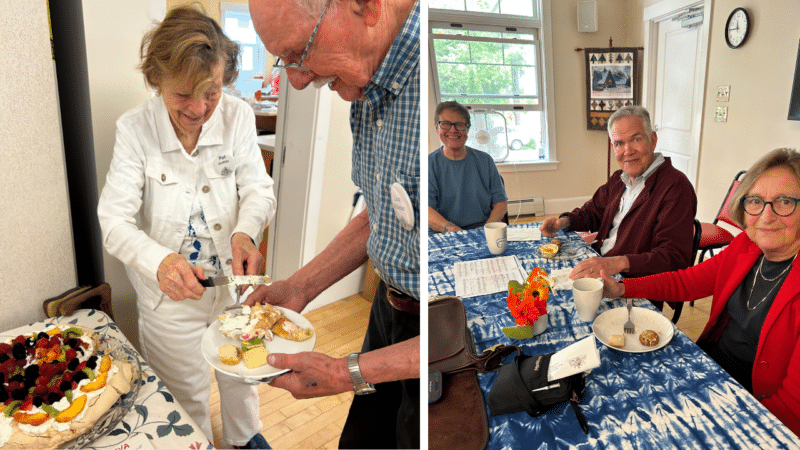
In February, Bishop Brown announced that the diocese would show its support for the ministry of refugee resettlement by hosting a Refugee Sunday on the First Sunday of Lent, March 9. Realizing that churches might have other plans in place for that Sunday, they were offered the flexibility to choose another date. Among those who did so was St. Margaret’s in Belfast, which celebrated Immigrant and Refugee Sunday on July 13 with a special worship service, followed by a “global coffee hour.”
“We chose that date because the Gospel reading was the story of the good Samaritan,” says the Rev. Margaret D’Anieri, a retired Episcopal priest and member of St. Margaret’s along with her husband, Chester Bowling. “My main role was to do the liturgy piece using the resources from Episcopal Migration Ministries (EMM).”

D’Anieri (who worked with EMM when she was canon for mission in the diocese of Ohio) and Bowling were two members of an ad-hoc, mostly lay committee convened by the Rev. Barbara Briggs, St. Margaret’s rector, to plan not only the day’s events, but four weeks of related programming that preceded it. “I made an announcement in church and put out an invitation to anyone who had a passion about the plight of refugees and asylum seekers.” says Briggs. “They took the bull by the horns. It was a real education and people were truly engaged.” Committee members also included Ruth Heffron, who ran most of the meetings and kept minutes, and Nan Cobbey, who worked with D’Anieri, Pat Griffith, and Julian Sheffield on the worship service, and with Mary Rackmales to bring organizations and speakers to St. Margaret’s in the weeks leading up to July 13. Bowling and Betsy Feeley—who regularly arranges a rotating art exhibit in the corridor between the church sanctuary and parish hall—procured and displayed artwork relevant to the theme.

“Most of my work was finding art that was done by refugees to tell their stories,” says Bowling. “I bought some items through the United Nations High Commissioner for Refugees that were made by refugees as a way of earning a living while they were living away from their homeland. You know that whole thing about a picture being worth a thousand words?” The through-line in the resulting exhibit, “RefugiArte: The Refugee Crisis Illustrated by Latin American Artists,” is a suitcase: “the key element in which every person who was forced to leave home tries to contain their whole like and take with them to the unknown future.” It’s a poignant symbol of what most Maine Episcopalians will never experience. “I can’t even imagine what that’s like,” says Bowling.
Along with education, walking in those hard-to-imagine shoes was a thread that stitched together the committee’s work and prompted outreach beyond Belfast. The four weeks of coffee-hour programming began, appropriately, on June 15—Pentecost Sunday—when, according to scripture, the Holy Spirit appeared to Jesus’ disciples and enabled them to speak in different languages. That day, Heffron and Cobbey led a presentation focused on displaced people around the globe and how EMM is responding following the federal funding cuts. On subsequent Sundays the congregation heard presentations by volunteers from the Capital Area New Mainers Project in Waterville and Connecting Across Cultures, based in Camden. They were asked to mark their family’s country of origin on a world map posted in the parish hall and to share their ancestors’ immigration stories on the “Honor Roll of Courage.” They also heard directly from recent immigrants, including “Diane” (not her real name), a woman from southern Africa now living in Lewiston who arrived as a refugee and worships with the Salvation Army. Unlike some people they approached, Diane was “very outgoing and willing to talk about her experiences,” says Rackmales, whose son knows Diane from living in Lewiston. “We asked her why she wasn’t afraid, and she said, ‘God has known me since before I was born, and he is going to protect me, and I have faith in that.’”
On July 13, St. Margaret’s faithful gathered in the church’s Gothic-style sanctuary, accompanying the procession with the timely hymn that begins, “In Christ there is no east or west, in him no south or north; but one great fellowship of love throughout the whole wide world…” In place of a traditional sermon, Briggs asked everyone to connect with one or two others in the pew and discuss questions tied to scripture, for example: “Am I called to be my brother’s keeper?” and what does that mean to us in the context of refugees, asylum seekers, and immigrants? Afterwards in the parish hall, people sampled fruit-piled pavlova (a traditional dessert in Australia), English sausage rolls, Irish soda bread, German pfeffernuse cookies and French crepes—treats from the various cultures that the otherwise homogenous-seeming group represents. “Even though the congregation is almost exclusively white, their awareness of the fact that they come from immigrants is very high and they really leaned into that in a big way,” says Bowling.

“We felt that this is an area of such tremendous importance right now and our concern was how to get into it without being totally political in approach, but to look at the whole refugee and immigration subject as absolutely part and parcel of our Christian identity and part of our inherent being in so many ways,” says Griffith, who came up with the world map and “Honor Roll.” As might be expected, both have multiple entries from the UK, Germany, and Scandinavia, but also Greece, Italy, Spain, and Lebanon. “It underscored that we are all children of immigrants, and it expands our empathy and identification with people who are trying to establish new lives in this country.”
Following Immigrant and Refugee Sunday, the learning and conversations have continued, not only between longtime parishioners, but with newcomers who are sharing their own experiences as children of more recent immigrants. “It’s like a pebble being thrown in a pond,” says Rackmales. For those who want to take a deeper dive, the committee has also shared book suggestions and a list of resources. “We all learned much more than we’d expected,” says Cobbey. “I hope we managed to surprise, inspire, and move our congregation to seek ways to help make refugees, asylum seekers, and immigrants’ lives safer in this state.”
While the committee’s work has officially ended, Briggs celebrates the energy that buoyed the congregation on a rising tide of awareness and connection beyond the walls of St. Margaret’s. Says D’Anieri, “I think the Holy Spirit gets credit for that.”
St. Margaret’s would be happy to share the wonderful liturgy developed for the service with other parishes in the Episcopal Diocese of Maine. If you would like a copy, please reach out to the Rev. Margaret D’Anieri.